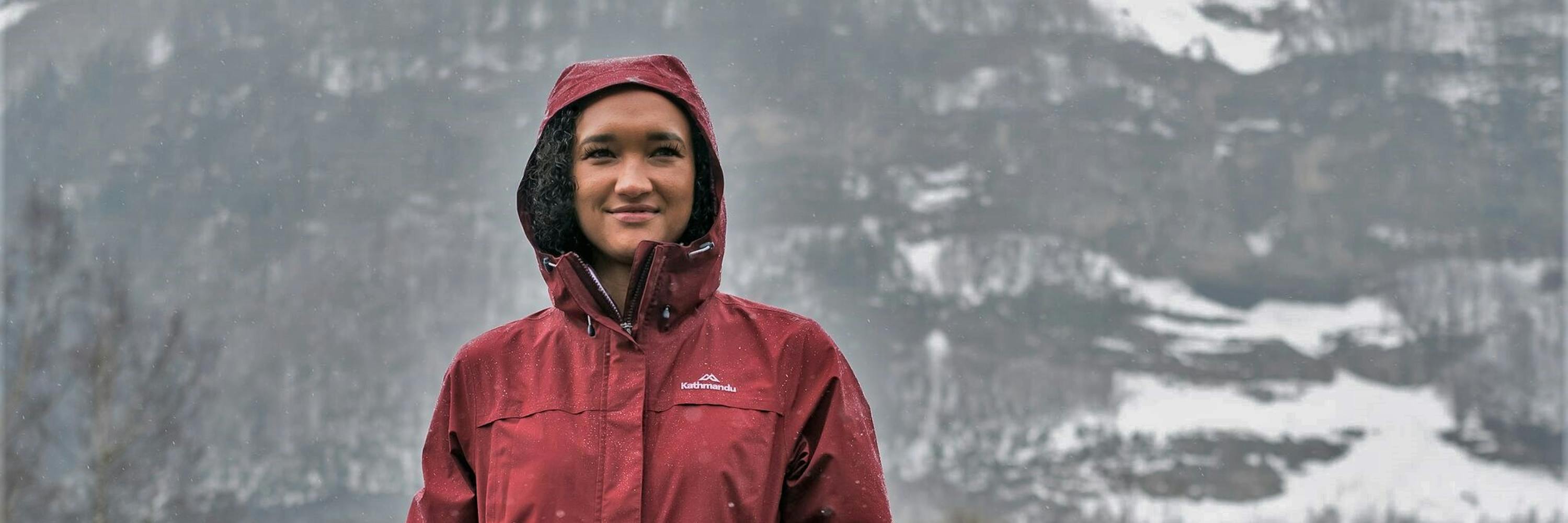Winter hiking can be a magical experience with snow-covered trails, crisp sunny days, and a peacefulness that can't be found in other seasons. Plus, with fewer crowds (and bugs!) on the trails, you can truly connect with nature and enjoy the beauty of winter. But as the weather gets chillier, it can be tough to motivate yourself to stay active and warm during outdoor workouts or activities. But that's where the right clothing comes in! In this guide, we'll walk you through the key factors to consider when choosing the perfect outfit for hiking in cold weather. So, no need to hibernate this winter - with our help, you can stay active, comfortable, and warm all season long!
The golden rule: Stay dry
When it comes to winter dressing, keeping warm is only half the battle. To truly stay comfortable and safe during outdoor activities, you also need to stay dry. Wet clothing can quickly suck away your body heat and become dangerous. The key is to prevent both external and internal moisture, with breathable and waterproof clothing. So how do you do this?
All about that base
When you're hiking in winter, it is essential to choose appropriate layers. The best baselayers are made of merino wool or polypropylene because they'll keep you warm, dry, and comfortable - even when wet. They're also really breathable, which means they'll release heat when you start to get too warm. Do not wear cotton - when cotton becomes wet from sweat or unexpected rain it becomes heavy and makes you cold. Like we said, merino or polyprop are your friends.
The perfect mid layer
Mid layer clothing's purpose is to keep you warm, without you overheating. We can't stress this enough - leave your cotton hoodie at home. Fabrics like wool and synthetic fleece are perfect all-round mid layers, and have the added bonus of being highly breathable, lightweight, and moisture-wicking. Wool and fleece also have a great warmth-to-weight ratio, and provide comfort without feeling too heavy, or taking up too much space in your pack.
If you're about to climb up a steep section of trail, or if the sun has come out and the conditions are warmer than expected, then you can keep your mid layer in your pack. The adage "be bold, start cold", comes from the fact that you warm up quicker than you think you will when you have a hiking pack on. So avoid sweating too early and having to stop, by wearing less warm clothes to begin with. But absolutely keep it in your pack for when the weather turns chilly, or to warm you back up when you stop for lunch.
Invest in the best
Waterproof rain jackets are essential for longer walks during winter, and are an investment you won't regret. The best outer-shell options are made from durable, waterproof and windproof fabrics, such as NGX, GORE-TEX, or Pertex. You also want your jacket to have fully taped seams, adjustable wrist cuffs, a fully adjustable hood, and a stiff rain-shedding brim. This brim will help keep rain from dripping down your face and into your bottom layers. However, it's important to note that a lightweight jacket may not be as durable as a heavier jacket, so you'll need to decide whether durability or weight is more important for your needs.
Don't forget the legs
Yep, you guessed it - your lower layers also need to be quick-drying, breathable, and moisture-wicking. But whether you opt for shorts, lycra leggings, hiking pants, or thermals with waterproof pants, depends on the conditions and personal preference. The benefit of shorts is that they're quick-drying and are less likely to get muddy or wet in stream crossings, but they're obviously not as warm. However, shorts with striped long johns underneath has been an iconic hiking combo for decades for a reason - it's all the freedom of movement with the added warmth. But these days, hiking pants have evolved to be the best of both worlds. For really cold or wet days, we recommend thermal leggings with waterproof pants overtop.
Happy feet
Proper winter hiking footwear is essential, and this means choosing boots that are not only waterproof but also provide good grip on slippery terrain. With the right boots, you can confidently navigate through snow, slush, and icy trails without your poor toes turning to icicles. But another important factor to bear in mind is that not all socks are created equal. Unlike regular socks, hiking socks are designed specifically to protect the foot, provide cushioning and wick away moisture. Look for socks made out of materials such as wool, elastane, nylon, and polyester.
The cherry on top
Don't undo all of your hard work by forgetting about your extremities! A beanie/balaclava, a scarf/neck gaiter, and a pair of gloves are must-haves in your hiking pack during winter. They not only keep you warm and cosy but also protect key areas of heat loss like your head, neck and hands. Plus, they act as a shield against the wind and other harsh elements.






